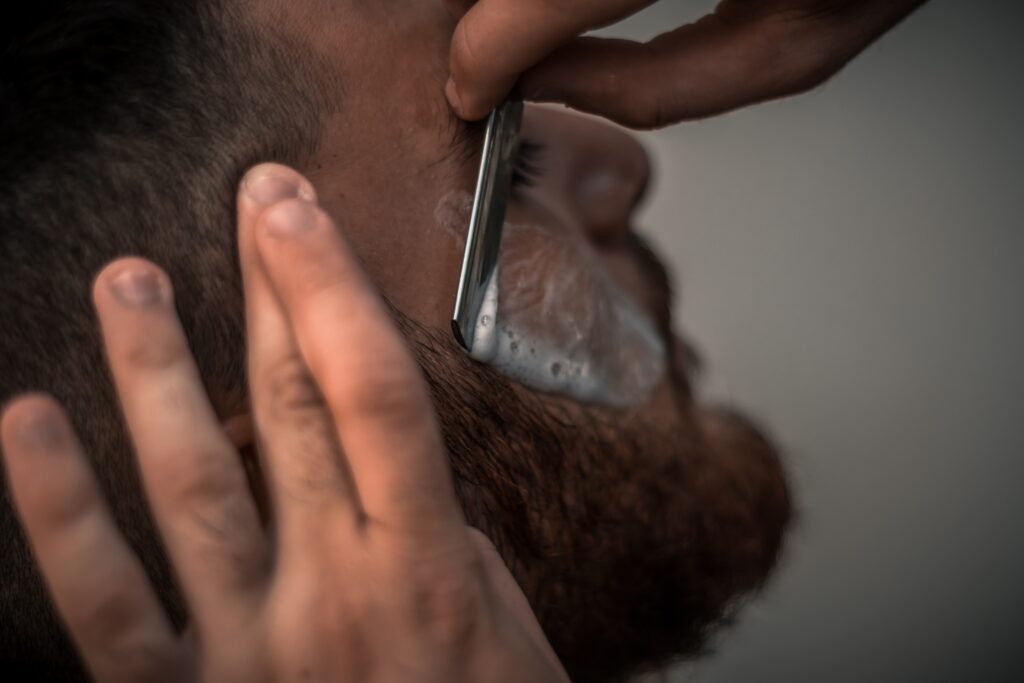If you’ve ever been mid-shave and thought to yourself, “Why am I doing this? Does shaving even do anything?” we’re here to tell you that you’re not alone.
For years, there has been a rumor that shaving makes facial hair grow back thicker and faster. In fact, this is a question that’s plagued humanity for centuries. Does shaving make hair grow back thicker, darker, or faster?

We’ve all heard it before, but is there any truth? Let’s take a closer look at the science behind shaving to find out.
The History of Shaving
Shaving has been around for a long time—at least 30,000 years, according to some estimates. The first razors were made from flint or obsidian and were likely used for ceremonial purposes rather than personal hygiene. It wasn’t until the Bronze Age that people began using metal razors to remove facial hair. In fact, the word “razor” is derived from the Latin word “raze,” which means “to scrape.”
So how did we go from scraping our faces with rocks to the modern razor blades we use today? In 1847, Englishman William Henson patented the first safety razor, which featured a protective guard that prevented users from cutting themselves. This was a significant breakthrough in the history of shaving, as it made shaving much safer and more accessible to the masses. Gillette followed suit in 1901 with the release of the first disposable razor blade, which further increased the popularity of shaving. Today, numerous razor brands and blade types are available on the market, giving men (and women) plenty of options when it comes to achieving a close shave.
The Science of Shaving
Now that we’ve taken a brief look at shaving history let’s get down to business.
First, let’s debunk the myth that shaving changes your hair’s thickness or rate of growth. The truth is, when you shave your hair, you are not actually changing the follicle itself. The follicle is the part of your skin from which your hair grows; it is determined by your genetics how thick or fast your hair will grow.
When you shave, you are essentially exfoliating your skin, which can remove dead skin cells and help to unclog pores. This can allow new hair follicles to emerge, giving you a temporary boost in growth.
However, there is one way in which shaving can affect the appearance of your facial hair. When hair is cut down at the root, the shaft of the hair becomes thicker because it has been cut off at an angle.
This can give the illusion that the hair is growing back thicker than before when it’s just being cut down at a different point.
How Fast Does Facial Hair Grow?
This a question that scientists have been trying to answer for years. While the answer may seem simple at first glance, the truth is that many factors can affect the rate at which facial hair grows.
There are a lot of factors that can affect the rate of facial hair growth, including:
Age
Younger men tend to have faster-growing facial hair than older men. This is because testosterone levels peak in men in their 20s and begin to decline as they age. Testosterone is responsible for stimulating facial hair growth, so it stands to reason that men with higher testosterone levels would have faster-growing facial hair.
Genetics
Another factor that can affect the rate of facial hair growth is genetics. Some men are blessed with genes that cause their facial hair to grow thick and fast. If your father and grandfather had thick beards, there’s a good chance you will too.
Race
Studies have shown that men of Caucasian or Hispanic descent tend to have faster-growing facial hair than men of African descent. This is due to differences in hormones and follicle structure between the different groups.
Hormones
We already touched on testosterone levels declining with age. Still, it’s worth mentioning that testosterone isn’t the only hormone that impacts facial hair growth. Dihydrotestosterone (DHT) is another hormone that plays a role.
DHT is derived from testosterone and is responsible for triggering beard growth. So, it could be due to low DHT levels if you’re struggling to grow a beard even in your early 20s.
Products
Several products on the market claim to promote facial hair growth by stimulating the follicles or providing nutrients that encourage growth. While some of these products may offer some benefits, it’s important to remember that there’s no magic bullet when growing facial hair. Be patient and give your beard time to grow naturally.
Health
Finally, your overall health can also affect the rate of facial hair growth. Men who are well-nourished and don’t suffer from health problems tend to have healthier hair follicles, resulting in faster growth. Conversely, men who are sick or malnourished may find that their facial hair grows more slowly.
The Bottom Line
Shaving has been around for centuries, but its efficacy is still debated. Does shaving really make facial hair grow back faster? Well, the answer is no. However, because the hair is cut down at an angle, it can appear to grow back thicker than before.
But shaving will not do the trick if you’re looking for a way to grow your facial hair. However, it is an effective way to remove unwanted facial hair—and it doesn’t have any adverse side effects (aside from the occasional nick or cut).
READ ALSO: What Color Pants Can Men Wear with a Teal Color Shirt?
